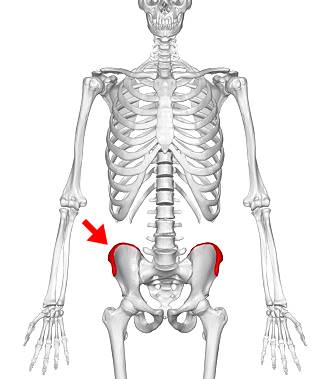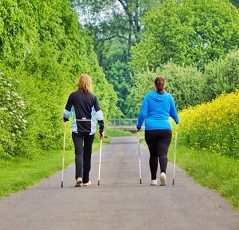Health Risks of a Large Waistline
Why does Waist Size Matter?
Fact Checked
×All the content published in our website is fact checked to validate its accuracy.
Visit our guidelines web page to learn more about our strict processes regarding how we review our content's sources: reliable and reputable journals, media websites, universities, colleges, organizations, and professionals.
Our articles are based on scientific evidence, and the references are included in its footnotes, which are clickable links to sound scientific papers.
First published: 11.Oct.2018
Waist Size and Health Risks
Learn why waist size matters; and the health risks of a large waistline
Your waist size and your Waist-to-Hip Ratio are indicators of how much body fat you have, and where it is stored.
This has a direct impact on your health and the risk of disease associated with being overweight or obese even if your Body Mass Index (BMI) tells you that you are on the safe side of being fat.
In this article, we will discuss how to measure your waist and hip, how to calculate your health risk based on those measurements, and also talk about the science behind body shapes (popular wisdom has identified pear, apple, and avocado shapes), and their relationship with health risks.
References and Further Reading
(1) Jayedi Ahmad, Soltani Sepideh, Zargar Mahdieh Sadat, Khan Tauseef Ahmad, Shab-Bidar Sakineh, (2020). Central fatness and risk of all cause mortality: systematic review and dose-response meta-analysis of 72 prospective cohort studies. BMJ 2020; 370 :m3324
(2) Smith, David (2016). Waist-To-Hip Ratio vs. Body Mass Index as a Predictor of Total Mortality for People with Normal Weight and Central Obesity. School of Physician Assistant Studies. Paper 571.
(3) Waist Circumference and Waist-Hip Ratio Report of a WHO Expert Consultation. World Health Organization, Geneva, Dec. 8 - 11, 2008
(4) Croft JB, Keenan NL, Sheridan DP et al., (1995). Waist-to-hip ratio in a biracial population: measurement, implications, and cautions for using guidelines to define high risk for cardiovascular disease. Journal of the American Dietetic Association, 95(1):60-64
(5) Assessing Your Weight and Health Risk. UCLA
(6) Riopelle D, Van P. (2017) Riopelle Fat Type Level: A Simpler Way for Men to Understand Body Shape and Health Risks. J Obes Weight-Loss Medic. v.3:17 doi.org/10.23937/2572-4010.1510017
(7) Heid, Iris M, et al., (2010). Meta-analysis identifies 13 new loci associated with waist-hip ratio and reveals sexual dimorphism in the genetic basis of fat distribution. Nature, 42:929, 2010. http://dx.doi.org/10.1038/ng.685, - 10.1038/ng.685
(8) Fu J, Hofker M, Wijmenga C. (2015). Apple or pear: size and shape matter. Cell Metab. 2015 Apr 7;21(4):507-8. doi: 10.1016/j.cmet.2015.03.016.
(9) Coutinho, T., Goel, K., Correa De S, D., Kragelund, C., Kanaya, A. M., Zeller, M., Lopez-Jimenez, F. (2011). Central obesity and survival in subjects with coronary artery disease: A systematic review of the literature and collaborative analysis with individual subject data. Journal of the American College of Cardiology, 57(19), 1877-1886. DOI: 10.1016/j.jacc.2010.11.058
(10) Hawwash N, Sperrin M, Martin GP, Joshu CE, Florido R, Platz EA, Renehan AG., (2024). Waist circumference-years and cancer risk: a prospective study of the association and comparison of predictive performance with waist circumference and body mass index. Br J Cancer. 2024 Oct 4. doi: 10.1038/s41416-024-02860-y. Epub ahead of print. PMID: 39367274
About this Article
Why waist size matters: the health risks of a large waistline, A. Whittall
©2018 Fit-and-Well.com, 11 Oct. 2018. Updated. 08.Nov. 2024. Update scheduled for 11.Nov.2027. https://www.fit-and-well.com/fitness/waist-size-matters.html
Tags: abdominal fat, waist (size), fitness, weight loss







